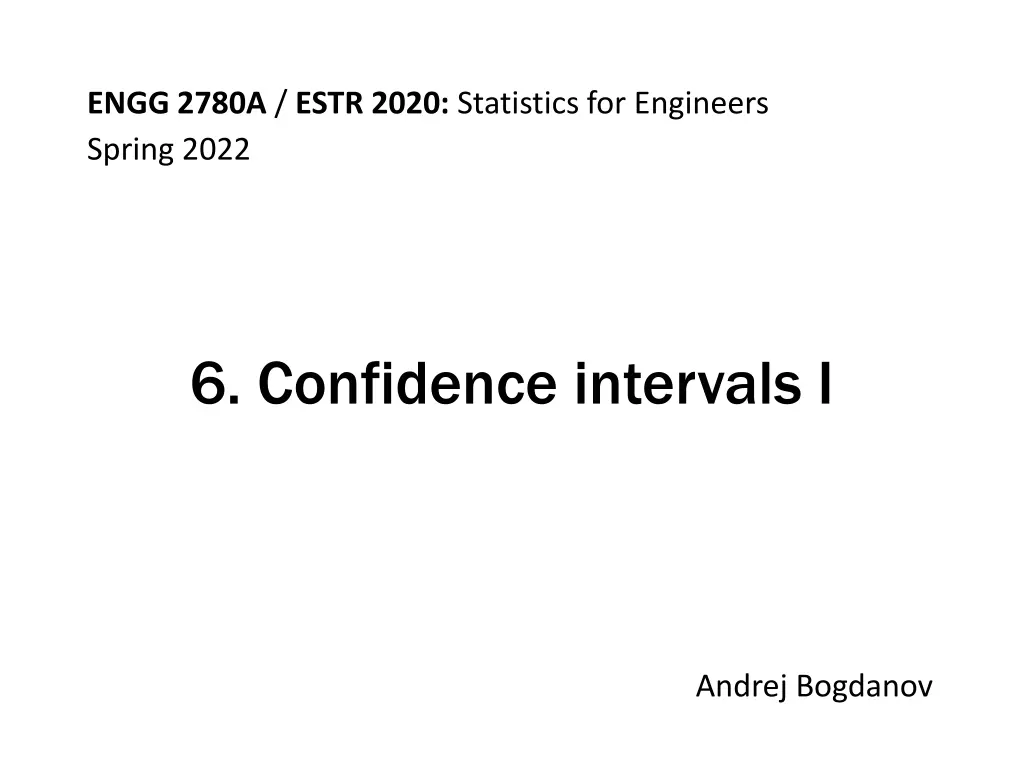
Mastering Confidence Intervals for Statistical Analysis
Explore the concept of confidence intervals in statistics, including how to calculate them for means and proportions, with practical examples and formulas. Learn how to determine sample sizes for different confidence levels and widths, as well as how to interpret results effectively.
Download Presentation

Please find below an Image/Link to download the presentation.
The content on the website is provided AS IS for your information and personal use only. It may not be sold, licensed, or shared on other websites without obtaining consent from the author. If you encounter any issues during the download, it is possible that the publisher has removed the file from their server.
You are allowed to download the files provided on this website for personal or commercial use, subject to the condition that they are used lawfully. All files are the property of their respective owners.
The content on the website is provided AS IS for your information and personal use only. It may not be sold, licensed, or shared on other websites without obtaining consent from the author.
E N D
Presentation Transcript
ENGG 2780A / ESTR 2020: Statistics for Engineers Spring 2022 6. Confidence intervals I Andrej Bogdanov
Confidence intervals ^ ^ A p-confidence interval is a pair ( , +) so that ^ ^ P( is between and +) p
Give a 95%-confidence interval for the mean from 30 Normal( , ) samples
Confidence interval for normal mean X1, X2, , Xn are Normal( , ) samples sample mean X is Normal( , / n) P(X z / n X + z+ / n) = P( z+ Normal(0, 1) z ) 95% confidence for z = z+ 1.96
Normal algebra review Xis Normal( , ) X+ bis aXis X1, , Xnare Normal( , ) X1+ + Xnis
How many Normal(, 25) samples do you need for a 95% confidence, width 10 interval?
Come up with a 95% confidence interval for p from 20 Indicator(p) samples https://homepage.divms.uiowa.edu/~mbognar/applets/bin.html https://homepage.divms.uiowa.edu/~mbognar/applets/bin.html
p X p X
Confidence interval for Indicator(p) P(A zB p A + zB ) P( z Normal(0, 1) z) X(1 X)/n + z2/4n2 1 + z2/n X + z2/2n 1 + z2/n B = A =
n = 20, 95% level p X direct calculation formula via normal approximation
Simplified confidence interval P(A zB p A + zB ) P( z Normal(0, 1) z) X(1 X)/n + z2/4n2 1 + z2/n X + z2/2n 1 + z2/n B = A =
34 of 100 Indicator(p) samples came out positive. Give a 95% confidence interval.
n = 20, 95% level p X complicated formula simplified formula
How many (simplified) samples do you need to get a 0.1 width interval with 95% confidence?
Confidence limits (one-sided intervals) A lower confidence limit is the right endpoint of confidence interval ( ) An upper confidence limit +is the right endpoint of confidence interval (- , +)
Confidence limits for normal mean X is mean of nNormal( , ) samples P( X + z / n) = P(Normal(0, 1) z) P( X z / n) = P(Normal(0, 1) z) 95% confidence for z 1.645
